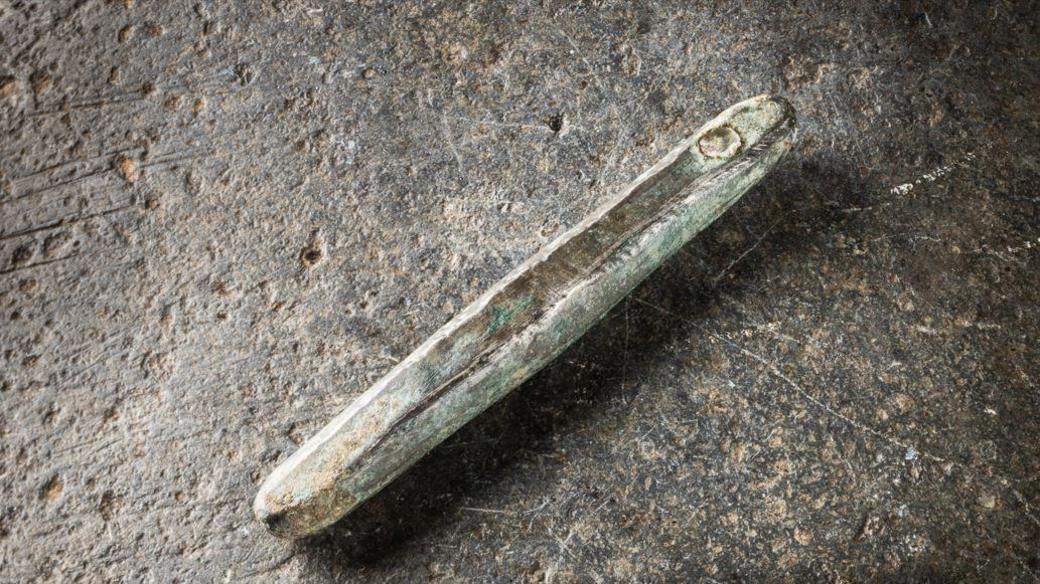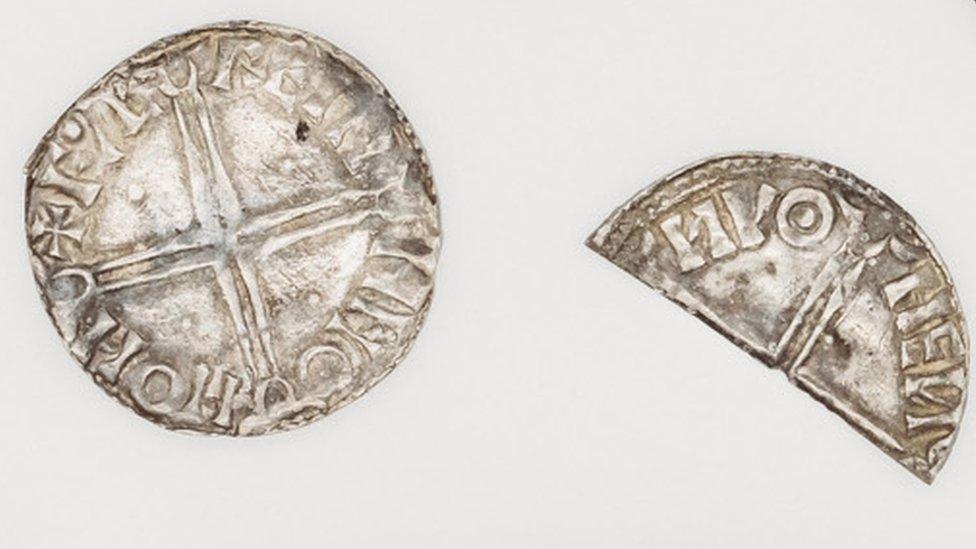Viking coin 'savings account' declared treasure

The collection of coins dates back about 1,000 years
- Published
A hoard of 36 Viking age silver coins found by two metal detectorists in a field in the Isle of Man has been legally declared as treasure at an inquest.
Many of the pieces, which date between 1000 and 1065 AD, were found by John Crowe and David O'Hare in January, with the remaining retrieved between February and late April.
Manx National Heritage curator of archaeology Alison Fox said the collection was comparable to "a good size savings account".
The coins would help further understanding of the "complex" economy of the era on the island, she said.
The coins marked the second find to be declared treasure this year on the Isle of Man where "more Viking Age silver has been discovered per square kilometre than in England, Ireland, Scotland and Wales", she said.

The coins were taken to the Manx Museum after being found by David O'Hare (left) and John Crowe (right)
The coins range from 0.7in (17mm) to 0.8in (20.5mm) in diameter, with some bearing small cuts where the silver was historically "tested" in order to check its quality.
The majority were minted during the reign of Edward the Confessor, who ruled between 1042 and 1066, with others featuring English kings Aethelred II, who reigned from 978 to 1016 AD, and Canute, whose reign ran from 1016 to1035 AD.
Ms Fox said it was typical for coins found on the island to bear the likenesses of different rulers and be from mints in both Ireland and England, as the island represented "a sort of offshore financial centre" of the Viking Age.
The buried coins would "have essentially been used as a kind of bank account, with coins added and taken out", she added.
During the summer, the silver pieces were studied by the world’s leading expert in Viking Age coins from the island, New Hampshire-based Kristin Bornholdt Collins.
It showed "the variety of currencies available to an Irish Sea trader or inhabitants of Man in this period", she said.
She described the "important" hoard as providing a "rare" chance for side-by-side study with the locally-found Northern and Glenfaba hoards from a similar period.
The coins will be on display at the Manx Museum from Wednesday until 13 October.
Why not follow BBC Isle of Man on Facebook, external and X, external? You can also send story ideas to IsleofMan@bbc.co.uk, external
Related topics
- Published29 May 2024

- Published14 July 2021
